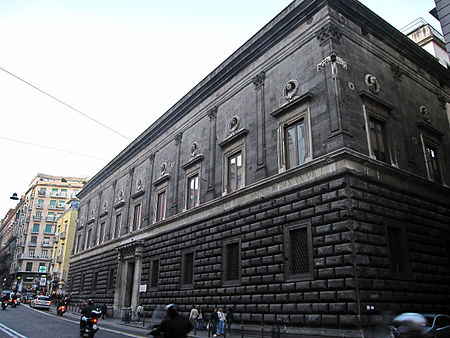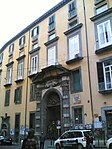Palazzo Orsini di Gravina
1549 establishments in ItalyBuildings and structures completed in 1549Orsini familyPalaces in NaplesRenaissance architecture in Naples

The Palazzo Orsini di Gravina is a Renaissance-style palace on number 3 Via Monteoliveto, in the San Lorenzo quarter of Rione San Giuseppe-Carità, of central Naples, Italy. Since 1940, it has housed the Faculty of Architecture of the University of Naples. It is located across the street and a few doors north of the sleek and modern Palazzo delle Poste (Post Office). Across the street at the north end of the palace, is the Piazza Monteoliveto with its Fountain and the church of Sant'Anna dei Lombardi.
Excerpt from the Wikipedia article Palazzo Orsini di Gravina (License: CC BY-SA 3.0, Authors, Images).Palazzo Orsini di Gravina
Via dei Carrozzieri a Monteoliveto, Naples San Giuseppe
Geographical coordinates (GPS) Address External links Nearby Places Show on map
Geographical coordinates (GPS)
| Latitude | Longitude |
|---|---|
| N 40.845237 ° | E 14.251462 ° |
Address
palazzo Gravina
Via dei Carrozzieri a Monteoliveto
80134 Naples, San Giuseppe
Campania, Italy
Open on Google Maps










